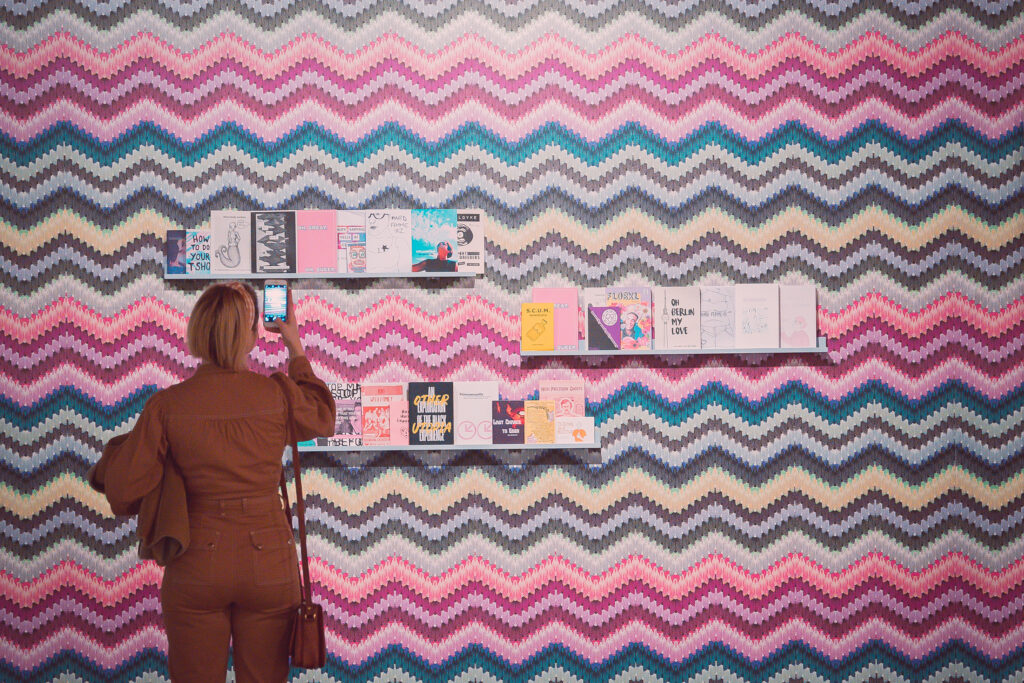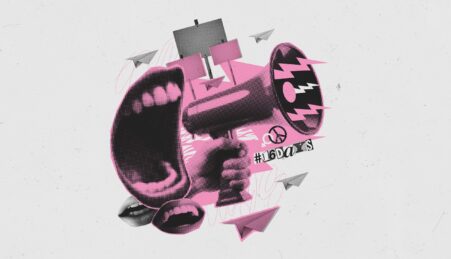The Manchester creatives shaping a new wave of progressivism in the city
“It’s about having that visibility within a cultural institution, which for a long time has been missing,” says Imogen Holmes-Roe, one of the curators of the 2023 (Un)defining Queer exhibition at Whitworth Art Gallery in Manchester.
Co-led by an intersectional group of participants who self-identify as LGBTQIA+, the exhibition ran throughout 2023 at The Whitworth, one of Manchester’s leading cultural venues with a mission of “disruption for change”. The project aimed to use a ‘queer lens’ to disrupt binary notions of gender, sex, and sexuality in order to challenge inequalities.
Imogen worked alongside art gallery project producer Dominic James Bilton to establish the exhibition. She explains the role of their different backgrounds when it comes to ‘queerness,’ and how this supported the development of the project.
“For me, queerness is about listening,” says Imogen. “It’s definitely been about stepping back and absorbing myself in the conversations that are happening around me. [It’s about] making sure that, as I work with Dominic to facilitate those responses and try to articulate them within the gallery setting, that I’m being respectful to what I’ve heard.”
Imogen explains how she took on the role of a queer ally when working on the exhibition, pushing herself to understand what queerness can look like from an outsider’s perspective. Paired with Dominic and what he describes as a more “first-hand knowledge”, their dynamic partnership, attitudes and experiences meant that they were able to represent the LGBT+ community in a refreshing way and explore what it really means to be queer.
“I think [queerness] is about being brave; I think this project has really pushed me to kind of go beyond a lot of my normal practice. And again, there’s been a lot of self-doubt along the way,” says Imogen.
Dominic reflects on Imogen’s involvement in the project and the notion of whether you are “queer” when you “work queerly”. He says, “Do we have to be LGBTQ+ to be able to work queerly? We think of ‘queer’ as a word and an action to disrupt the dominant narrative, and I think that’s exactly what you [gesturing to Imogen] do, and is exactly what you’ve been doing with the dominant narrative of this gallery as a curator. You’ve been disrupting that. You’ve been working queerly as an ally.”
Dominic’s notion of queerness being a way of “disrupting the dominant narrative” was at the heart of this whole exhibition, and the Whitworth’s place in cultural society. From the outside, this gallery seems perpetually stuck in 1908. The grandiosity of its bright red brick and the huge statue of Edward VII, just two minutes down the road, echoes a period of time where an exhibition like this would not have been accepted. This it what made the exhibition all the more powerful.
Recognising queer history
The exhibition covered a range of topics within queer history including Greek Mythology and the history around the Aids and HIV crisis. For many young people, the Aids and HIV crisis may seem a long time ago, but it’s actually a very important part of recent queer history.
Dominic sums up the importance of curating collections like this: “We want people to come in and feel like they’re represented, that they are seen, that they are allowed to look at the same sex in a desired way; because society often tells us that we can’t do that.”
He adds: “We want people to be activists by the time they come away, to have knowledge of their history.
“With regards to HIV and Aids in particular, this is one area that we were quite keen to bring to the front. Perhaps in the younger generations, the Aids crisis is confined to history now, but actually it’s still with us.”
In 1986, the American Foundation for AIDS Research asked 25 galleries and their artists to donate an artwork for auction that would respond to the AIDS epidemic. This image was repeated on wallpaper within the exhibition space, and formed an important part of the creative pieces on display.
The exhibition was the first of its kind at the gallery and paths a strong path for the likes of Imogen and Dominic, to shape galleries to be more inclusive and represent a wider variety of the people in the communities they represent.
Community Engagement
The comments from participants in the LGBT+ foundation made the exhibition all the more interesting. They detailed how much each piece meant to them. The Whitworth has always been a constituency, focused on people in the community rather than the institution, and this exhibition offered perfect way of capturing this.
There were many pieces which were interesting from a historical point of view and which further show how debates surrounding queerness have existed throughout history and aren’t specific to the modern day. In the exhibition, a piece depicted David Garrick, a famous actor that played Richard III in 1772. Garrick later found himself at the centre of the first open debate on homosexuality within British society in 1772. History appears to always be written by the ‘oppressors’, and in this case it’s interesting to see oppressed historical figures from new perspectives.
Manchester Poetry Library
Located down the road from the Whitworth Gallery, on Oxford Road, is another cultural venue looking to make a change in Manchester’s community and beyond. The new Manchester Poetry Library, located at Manchester Metropolitan University, aims to transform the narrative of art through activism and reshape how poetry can be presented on a wider scale.
As the Poetry Library’s Learning Manager, Roma Havers is working to “imagine futures more broadly; with more hope, and more strangeness”, and disrupting the narrative that poetry is an art form that only a select few can participate in. They strongly feel that the space is a very exciting new development for Manchester and poetry as a whole, with their uniqueness and passion for poetry serving as a perfect example of what the library is hoping to incite in a new generation of literacy lovers.
After joining the creative writing society at university, Roma quickly became the leader of the group. She then joined Manchester-based poetry group, Young Identity. “They took me under their wing,” says Roma. “I started getting commissions, and it was really at the peak of when people started thinking spoken word and poetry was a cool thing to do.”
Roma applied for the job of Learning Manager as it encapsulated all the things she had been freelancing in one role. A lot of the poets who inspired Roma early on in her career were spoken word poets, such as Andrea Gibson and Kae Tempest.
“I think it’s sometimes odd to reference people that feel really local, but they are often the truest in terms of what your influences are. People like Kim Moore are also really, really brilliant. I know I’ve mainly mentioned women there but that’s fine,” Roma laughs. “We’ll do a whole catalogue of just women for a bit, because we’ve heard about men for a while!”
In the past, poetry has been historically dominated by straight white men. For many people, the first person they think of when asked “name a famous poet”, would most likely be a certain Tudor Bard named William Shakespeare. However, contemporary poetry is much broader than people might think. “I think there’s a lot of queer people in the arts,” Roma says. “I think partially that’s because it’s a space where people historically have felt more free to explore themselves. They also have to hide themselves in different ways within those spaces.”
Roma is determined to lift up the voices of those who have been ignored and ostracised by society. Based in the heart of Manchester, they have developed an extensive collection of contemporary poetry from books to recordings in multiple languages, with the aim of creating an exceptional poetry research centre. Most importantly, the Library wants to create a space where poetry belongs to everyone.
This shows how important spaces like these are for LGBTQ+ activism, which are inspiring the next generation of artists and poets who, until now, might not have considered that they have a seat at this table.






Leave a reply